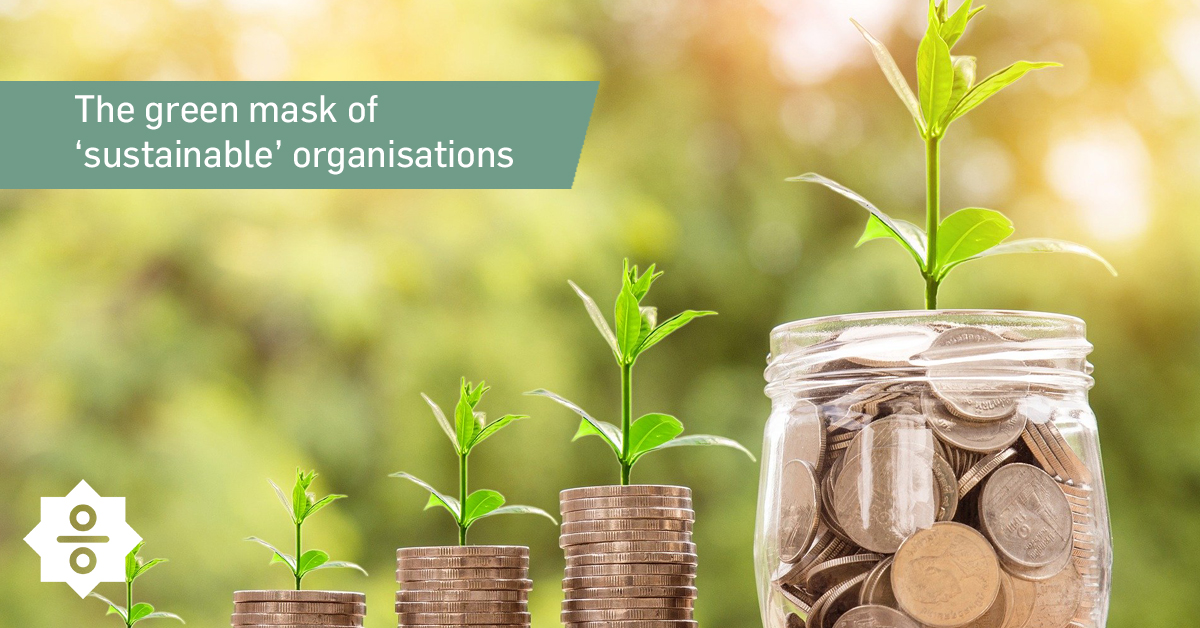For the Dutch version, click here
Sustainable investments have gained more and more ground within the financial world in the past few decades. As soon as a company is labelled ‘green’, the average investor seems much more willing to invest capital in it. An upward trend in this area has been evident for several years. Even during the coronavirus outbreak, the first three months of this year saw investors once again investing more money into sustainable investment funds. But are all these companies as sustainable as they appear, or is this a pretence that is kept high in order to attract more investors in this way?
Earlier, Faces Online published an article about what is meant by Sustainable Investments, you can read this article here.
The rise of Social Responsible Investing
The roots of Social Responsible Investing (SRI) date back to the 1980s, when the rise of socially responsible investment shook the world of financial instruments. However, it was not until around 1995 that investors began to integrate ESG (environmental, social and governance) factors into their decision-making. Nowadays, SRI has increased even further. Clearly, investors are increasingly looking for companies that can stand the test of time. In addition, green investments are also increasingly being used as a means of portfolio diversification. The upward trend of SRI can clearly be seen in the exponential growth in the issuance of so-called ‘Green Bonds’ by the European Investment Bank (EIB). This issue has almost quadrupled in four years, from $45 billion in 2015 to $202 billion in 2019 [1]. Two weeks ago, the European Commission announced in its annual policy plan, the so-called ‘State of the Union’, that more than $260 billion will be spent on new Green Bonds [2]. In addition, 20% of the total assets under management are currently used for ESG investments [3].
Greenwashing
Yet the sustainable investment world has often been the target of criticism. Environmental awareness is an enormously broad concept and therefore cannot be measured by a single yardstick. Due to the increasing interests for the environmental awareness of a company, some corporations appeared to obtain this green label by posing as a sustainable company. In reality, the core of these companies rather contributed to the pollution of the environment instead of the preservation of it. This concept, the wrongful sustainability claim of companies, is also referred to as ‘Greenwashing’.
“Because there is no unambiguous measurement of a company’s sustainability, it makes the external verification of these sustainability factors by a possible accountant or auditor extra complicated.”
Greenwashing is seen as a cigarette manufacturer making a one-time charitable donation to lung cancer research, with the goal of obtaining a certain ‘Charity Label’, while the core of the business is one of the root causes of the problem. A crucial factor in counteracting greenwashing is corporate transparency and control by independent third parties. Transparency is often associated with the amount and quality of data that is disclosed. The with this, however, is that there is no gold standard with regard to data publication. Too little public data indicate that information is being withheld, while an abundance of released information can lead to a search for a needle in a haystack. In addition to the quantity, the quality of the data is essential. Research by the Dutch Authority for Financial Markets (AFM) has shown that too little (standardized) non-financial information is released by listed companies [4]. In addition, the link between green objectives and quantifiable KPIs is still in its infancy. Because there is no unambiguous measurement of a company’s sustainability, the external verification of these sustainability factors by an accountant or auditor is made even more complicated.
In addition to greenwashing by companies themselves, investment funds are also being questioned nowadays. Because sustainable investment is such a broad concept, most funds integrate a wide range of sustainability criteria into the investment process. However, there are also funds that integrate only one of these themes into the investment process and then claim to be a ‘sustainable investment fund’.
“In this way, with the right, self-created criteria, a subsidiary can be praised in the proverbial green sky, while in reality this is unjustified.”
Standards for sustainability
There is a wide range of overviews in which sustainability is measured and displayed per company. Different measures are used to arrive at a so-called ‘green score’. General criteria of these surveys often include electricity consumption, water consumption, the type of material used as a raw material and the efficiency of this raw material consumption. However, in addition to environment-related criteria, social factors also play a role in determining the degree of sustainability in a company. For example, the remuneration of a CEO in relation to the average salary of employees is often included as a criterion, and the male-female ratio within the board of directors is also often taken into account. The criteria are often combined into a total sustainability score per company, after which these companies are then ranked. However, these overviews and rankings are not all equally reliable, as there are several companies that create an overview in which the company itself ends up high. In this way, with the right, self-created standards, a subsidiary can be praised highly, while in reality this is unjustified. This is why the independence of the company that issues the overviews and scores should always be investigated. An independent agency that tests the companies and creates an overview will almost always publish the methodology used in order to be as transparent as possible to the readers.
Investing in your future
Apparently, when investing in sustainable companies, investors should remain critical. There are various sustainable investment techniques that help with this. For example, the ‘negative screening’ method ensures that companies and sectors that carry a high ESG risk are divested during the investment process. As a result, companies with a low ESG score are not included in the list of investment options. A slightly more aggressive sustainable investment strategy is the ‘ESG integration’ technique, in which only companies with a high ESG rating qualify, because certain ESG factors are taken into account in the analysis and decision-making process when composing the equity portfolio. The difference with the ‘negative screening’ method here is that not only the worst-performing companies are excluded, but specifically the better-performing companies are given extra consideration. The most ambitious form of SRI is ‘Impact Investing’, a strategy in which investors only invest in companies and projects in which the exact impact can be determined and quantified in order to distinguish the best-in-class companies. For example, companies that indicate the exact emissions of Co2 or monitor and disclose the entire energy consumption [5].
Despite the fact that there does not seem to be an unambiguous yardstick for sustainable investment, it remains crucial that when you want to start investing sustainably, you do not blindly follow ‘green labels’, since nowadays almost every company has such a (self-created) label. There are various investment strategies that can help, with Impact Investing appearing to have the greatest future, as it counters greenwashing and despite being a lot more time-intensive, it does exactly what SRI is meant to do: contribute to a future-proof living environment.

















